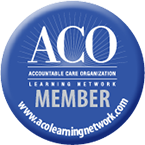Recently Funded Projects: Improving Care Value for Children
A New Pathway for Achieving High-Value Care for Medically Complex Children
Funder: Robert Wood Johnson Foundation
Summary: Recent payment reform efforts have given rise to promising models for improving the value of health care. Yet little is known about which payment approaches can best address the unique challenges of caring for our most vulnerable populations. From 2012 through 2015, stakeholders in Allegheny County, Pennsylvania, developed a new pathway for Medicaid payment reform that improved the value of care for children with medically complex conditions.
The UPMC High Value Care for Kids model was facilitated within UPMC's integrated delivery and financing system with the leadership and resources of these partners:
- UPMC for You, the largest Medicaid physical health managed care organization (MCO) in the region
- Community Care Behavioral Health Organization, the behavioral health MCO for all Medicaid recipients in Allegheny County
- Children's Hospital of Pittsburgh of UPMC, the largest local provider of services for children with medically complex conditions
- Children's Community Pediatrics (CCP), a pediatric practice that is an affiliate of Children's Hospital
- General Academic Pediatrics (GAP) in the University of Pittsburgh Physicians group, a pediatric practice
- Families of children with medically complex conditions
This project comprised three components:
- Funding for care coordination and other needed clinical services and shared savings
- Information sharing and transparency, including reports with service utilization, cost, and quality
- Consumer-directed accounts to cover nonclinical goods and services that families identified as important to them
Within the UPMC for You pediatric member population, 10 percent of members who had consistently high costs were identified: about 1,300 children and adolescents with diverse medical conditions in Allegheny County. Of that population, a total of 263 children and youth who were patients at one of four UPMC pediatric practices (three CCP practices and GAP) were identified as the target. It was recognized that this group would present the greatest potential to impact families on a personal level, while also achieving cost savings.
Practice-based care coordination deepened the staff's understanding of the unique needs and challenges these families face, such as financial barriers and special accommodations for their child. This understanding, in turn, improved the level of assistance and care given to the child. Families reported that they felt supported by the project. They appreciated the availability of consumer-directed funds for products and services to improve the health and quality of life of their child. Many of these factors helped to reduce parental stress in caring for their child and contributed to an overall better quality of life for the family unit.
The financial impact of UPMC High Value Care for Kids was significant: in-patient medical care, emergency department visits, home care, and specialist services saw the greatest reductions in cost. There was an annual reduction of 9.1 percent in overall expenditures. Click here to download the final data on cost reduction for the entire project of UPMC High Value Care for Kids.
This project was successful in demonstrating and documenting a set of replicable methods and strategies to be used by other stakeholders as a roadmap for designing, implementing, and evaluating similar value based payment models. Learn more about these strategies and methods below.

"How-To" Manual for Redesigning Medicaid Payment Policies
This manual serves as a roadmap for organizations looking for replicable strategies, methods, and tools to guide similar and/or related value-based payment models. It is divided into six sections that describe the steps that were taken over the course of the project:
- Sections I, II, and III explain how to get started, how to design a value-based payment model, and how to implement that model.
- Section IV provides a summary of lessons learned.
- Section V is a list of toolkit materials, which may be downloaded below.
- Section VI is a glossary of commonly used terms.
Download the full manual here.
Toolkit Resources
This is a supplement to the "How-To" Manual. Each of the resources below is linked to a downloadable document for viewing, and in some cases, editing. (Some files are large; please be patient while loading.)
- Start Up
- Operational Plan Template
- UPMC Population DIVe (Dynamic Interactive View) Tool
- Payment Model Design
- Family Focus Groups for Designing Consumer-Directed Accounts
- Discussion Guide for Parental Focus Groups
- Discussion Guide for Transition-Age Focus Groups with Parents and Adolescents
- Summary of Discussions
- Planning for Consumer-Directed Accounts
- Practice Flow Diagram
- Outreach Letter
- Participation Form
- Purchase History Form
- Guidance for Care Coordinators
- Ongoing Performance Review
- Payment Model Implementation
- Practice-Based Care Coordinators
- Description of Care Coordinators' Responsibilities and Obligations
- Templates for Documenting Care Coordination Services
- Invoice Template for Reimbursement Payments to Non-Billing Providers
- Clinical Resource Toolkit for Providers
- Chart Review Tips
- Tip Sheet for Getting Started
- Patient Chart Review Tracking Tool
- Set-up Instructions for Clinical Team Phone and Video Conferencing
- Information on Automatic Prescription Refills
- Subspecialist Case Conference Sample Letter
- Provider FAQ About Payment Reform
- Care Coordination for Children with Special Health Care Needs – Pediatrics 2008
- Preamble Patient-Centered Principles
- Patient/Family Input on Service Delivery Components Supported through Payment Model
UPMC Center for
High-Value Health Care
UPMC is a global health enterprise and one of the nation's largest integrated health care delivery and financing systems. The UPMC Center for High-Value Health Care translates the work of this unique payer-provider laboratory into evidence-based practice and policy change for improving health care quality and efficiency. Many Center activities are supported through grants and contracts and conducted in partnership with community organizations and government agencies.
Connect
![]() 412-454-8400
412-454-8400
Improving Health and Health Care through Stakeholder Collaboration
UPMC and its Insurance Services Division recognize the value of collaboration in achieving an equitable, high-quality, and efficient health care system that meets the needs of diverse populations. We invite all interested stakeholders to join in this effort.

ACCOUNTABLE CARE ORGANIZATION LEARNING COLLABORATIVE MEMBER
UPMC Center for High-Value Health Care is proud to be a member of the Accountable Care Organization Learning Network, a group that helps organizations successfully implement accountable care.


